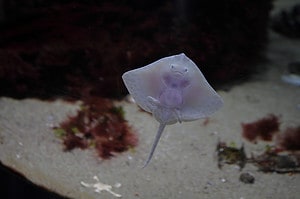The stingray remains one of the most fascinating animals in the world’s waters. However, the shy nature of the animal means most people do not know much about it. This article shares ten incredible stingray facts.
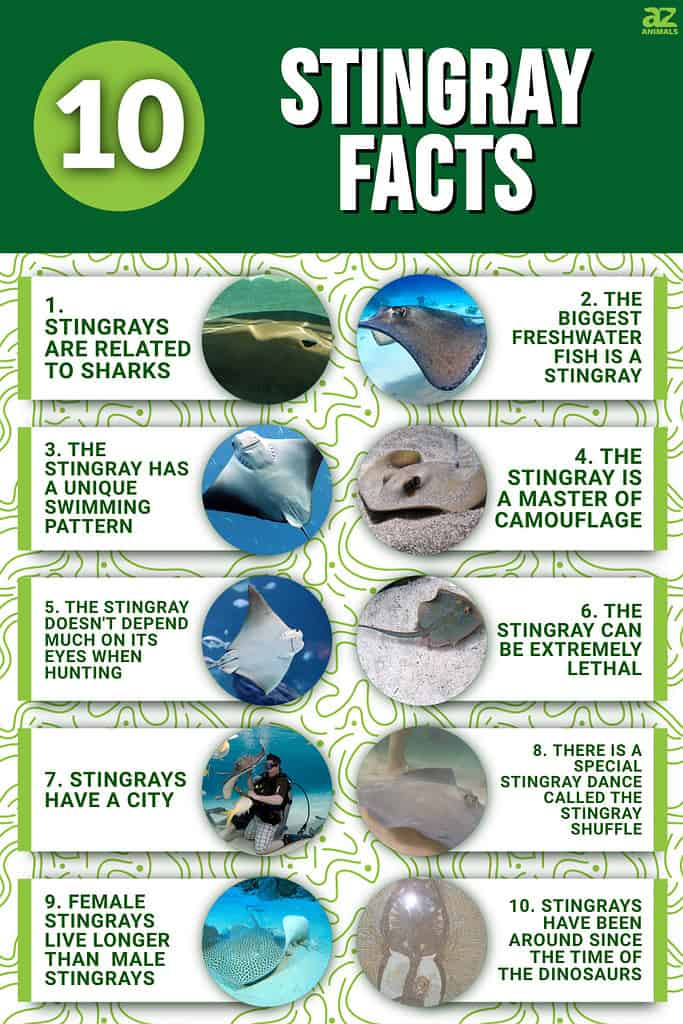
1. Stingrays Are Related To Sharks
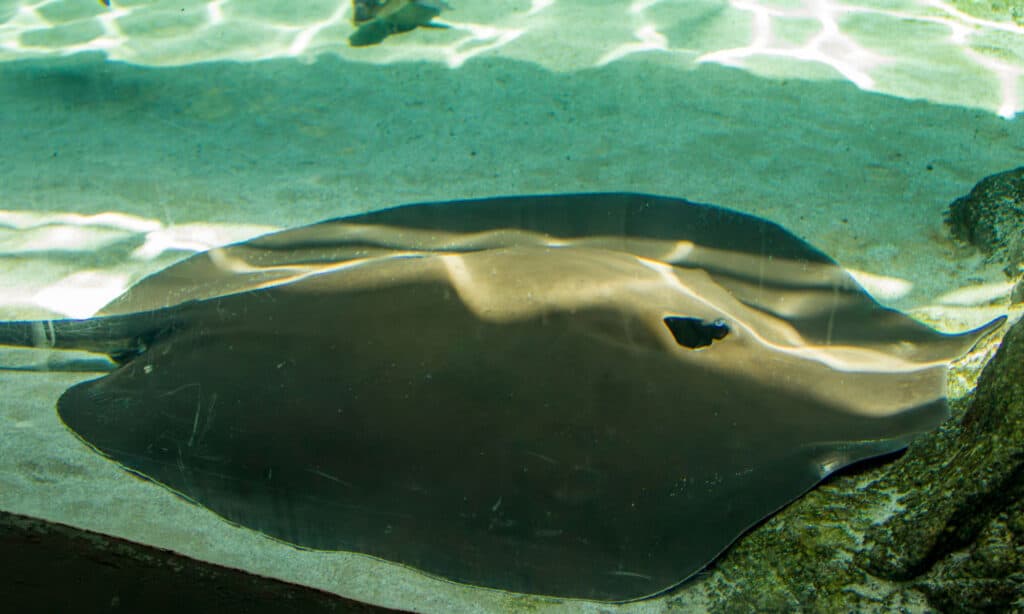
Like sharks, stingrays belong to a class of animals called elasmobranchs.
©Danny Ye/Shutterstock.com
Stingrays can be considered to be close cousins of sharks. They are elasmobranchs, a group of fishes with a cartilaginous skeleton and five to seven-gill slits. However, there are differences in the morphology of both breeds. Stingrays are flat and have their mouth, nostrils, and gills in the undersides of their bodies. However, the similarity between the species could get very confusing sometimes. A particular case is the angel shark which has a ray-like body. The sawfish, also classified as a ray, looks like a shark. It’s no surprise these two breeds are called cousins.
2. The Biggest Freshwater Fish Is A Stingray
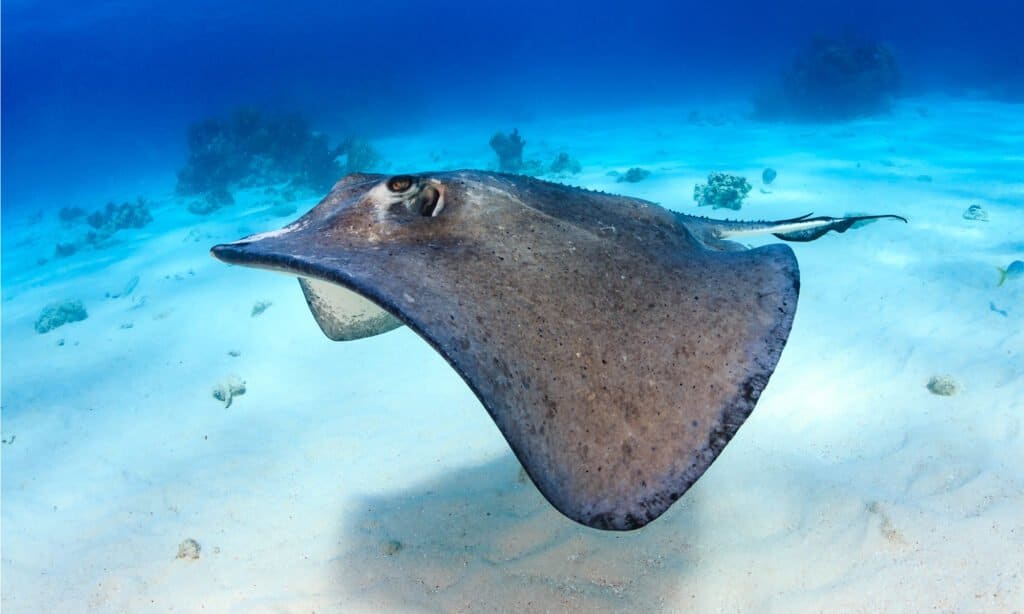
The stingray is the largest freshwater fish.
©Richard Whitcombe/Shutterstock.com
When people are asked what the largest freshwater fish is, nobody would think it would be a stingray. Well, it is a stingray. The official largest freshwater fish in the world is the giant stingray. The 661-pound river giant was caught in the Mekong River in Cambodia by a fisherman. A Mekong catfish formerly held the record until fishers caught this giant stingray. For the researchers involved, it was a beacon of hope that such large animals still existed in the waters of our world.
3. The Stingray Has A Unique Swimming Pattern

Some stingrays move about in the water through undulation, which involves rolling their body in a wave-like motion.
©Vicki L. Miller/Shutterstock.com
Most fishes swim using their fins, but the stingray is one of the exceptions. Some stingrays move about in the water through undulation, which involves rolling their body in a wave-like motion. Eels also use this method of swimming. Some other stingrays are known to flap their wings like birds to move about in the water. While stingrays may sometimes use their tail to maneuver during swimming, their primary purpose is for protection.
4. The Stingray Is A Master Of Camouflage
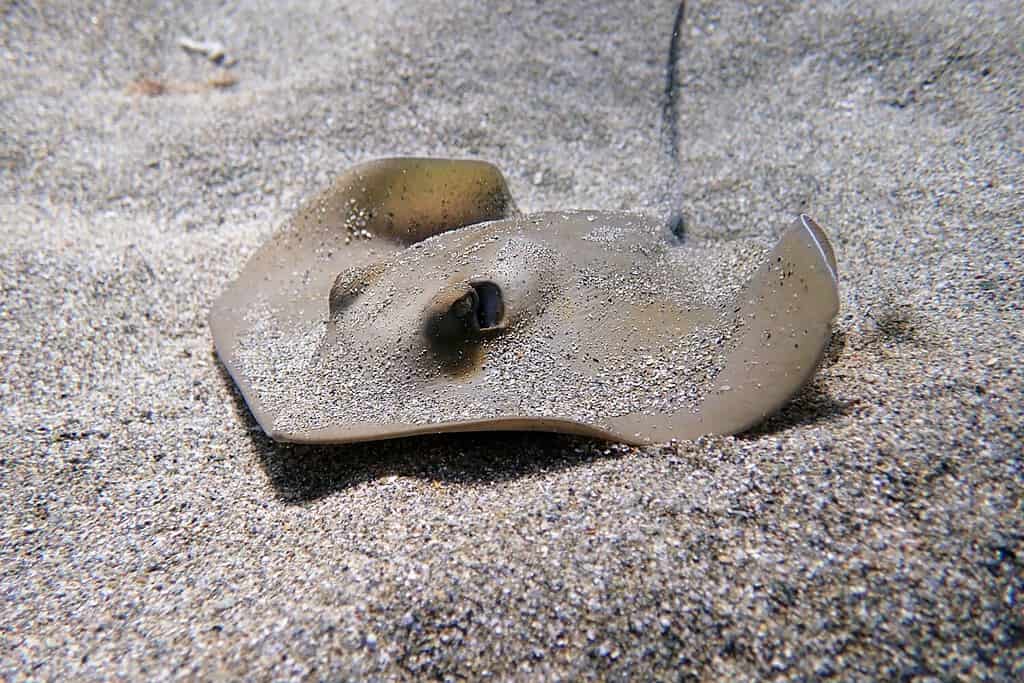
These fishes have mastered their environment so much that they blend in effortlessly to conceal themselves from prey and predators.
©Vojce/Shutterstock.com
There are very few animals in the sea that can camouflage as well as stingrays. These fishes have mastered their environment so much that they blend in effortlessly to conceal themselves from prey and predators. To achieve this, the stingray goes to the bottom of the ocean and flaps its wings until it is covered in sand. When this is done, the stingray lays still, waiting until the danger is gone or until the prey is in sight.
5. The Stingray Doesn’t Depend Much On Its Eyes When Hunting
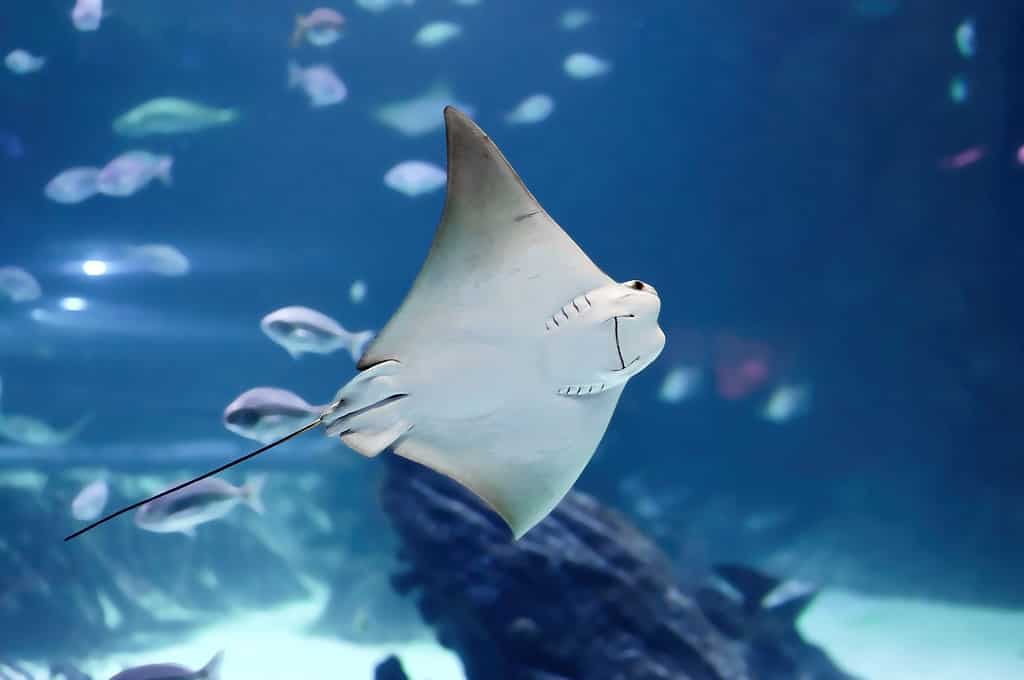
A stingray’s body is equipped with an electrical sensor called the ampullae of Lorenzini.
©BlackFarm/Shutterstock.com
The eyes of the stingray are found on the top of its head, making it challenging to see prey. Luckily for this fish, it doesn’t have to depend on its eyes to survive and feed. Its body is equipped with an electrical sensor called the ampullae of Lorenzini. This sensor around its mouth senses the natural electric charges of potential prey.
6. The Stingray Can Be Extremely Lethal
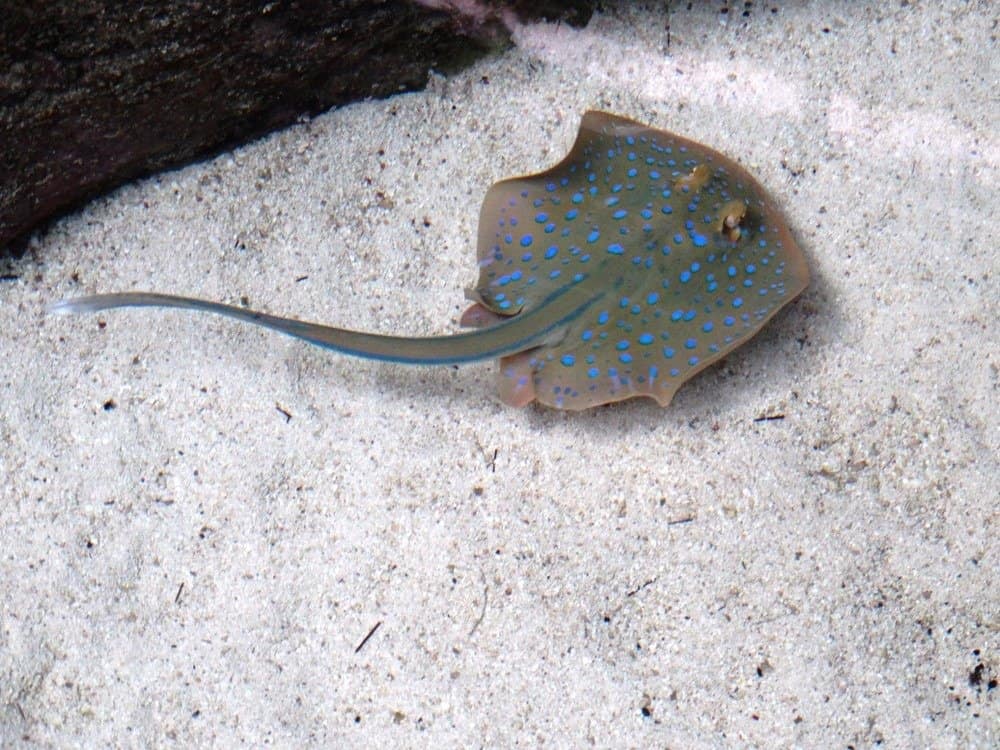
The stingray’s spine is venomous and can be fatal to its victim.
©Charles B. Cardell/Shutterstock.com
Although it naturally isn’t inclined towards violence, the stingray can be deadly, all thanks to the venomous spine at the end of its tail. The spine is venomous and can be fatal to its victim. In some instances, the venom can spread quickly and lead to the victim’s death. One unfortunate incident was the famous crocodile hunter Steve Irwin who died after being stung by a stingray.
7. Stingrays Have A City
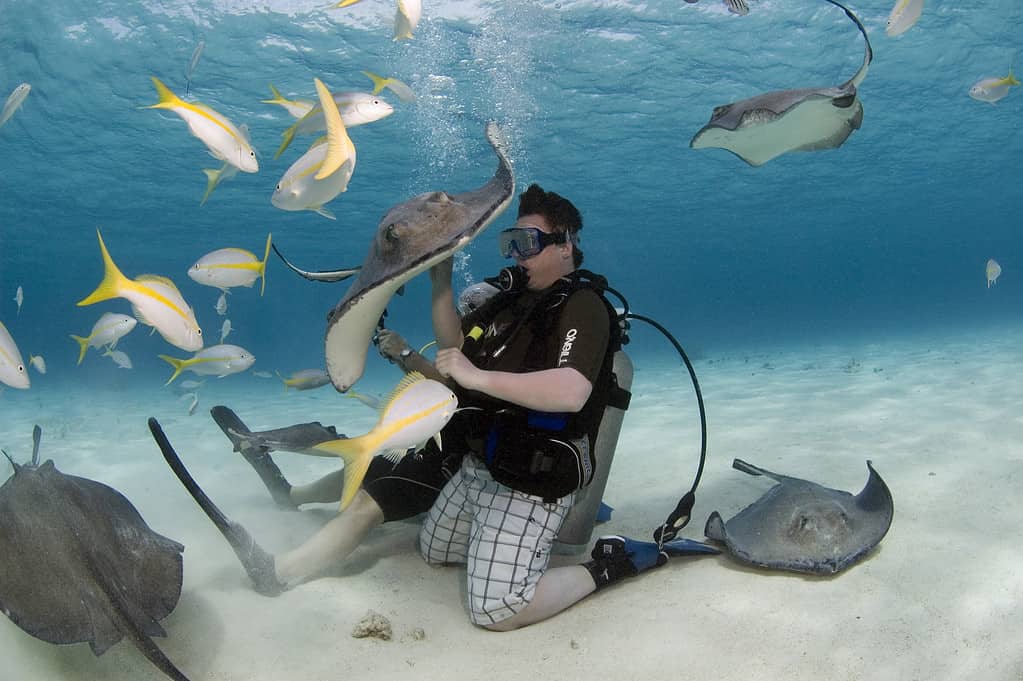
This fantastic city is a series of shallow sandbars found in the North Sound of Grand Cayman, Cayman Islands.
©Kfulgham84, CC BY-SA 3.0 – License
There is a place known as Stingray City due to the sheer number of stingrays living there. This fantastic city is a series of shallow sandbars found in the North Sound of Grand Cayman, Cayman Islands. Here, the stingrays seem to have become used to humans as they can be petted and played with. It has become a tourist attraction where people come to interact with them.
8. There Is A Special Stingray Dance Called The Stingray Shuffle
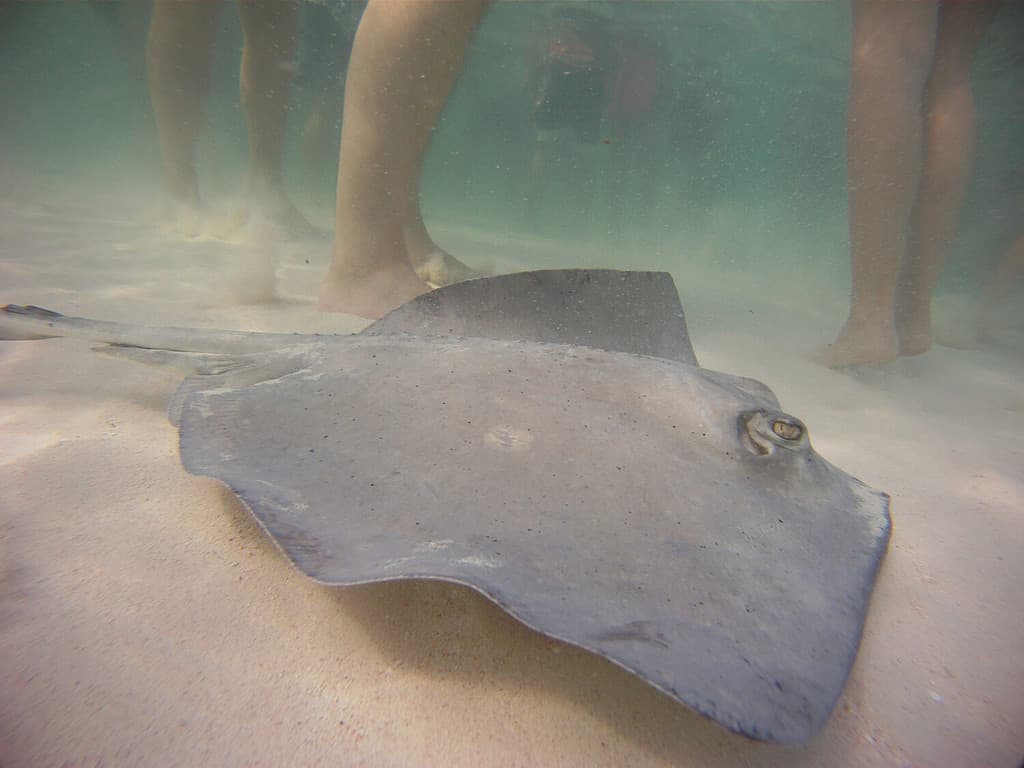
The best way to keep yourself safe from being stung is by practicing the stingray shuffle, which involves shuffling your feet along the ocean floor.
©Drop Zone Drone/Shutterstock.com
Weird as it might sound, there is such a thing as the stingray shuffle dance, which is not a move for the dance floor, but survival at the bottom of the ocean. Since it’s almost impossible to know if a stingray is buried in the ocean floor, the best way to keep yourself safe from being stung is by practicing the stingray shuffle, which involves shuffling your feet along the ocean floor. If there is any stingray on the way, it would be alerted of your presence and move away, avoiding any harm to itself that could have triggered it stinging you.
9. Female Stingrays Live Longer Than Male Stingrays
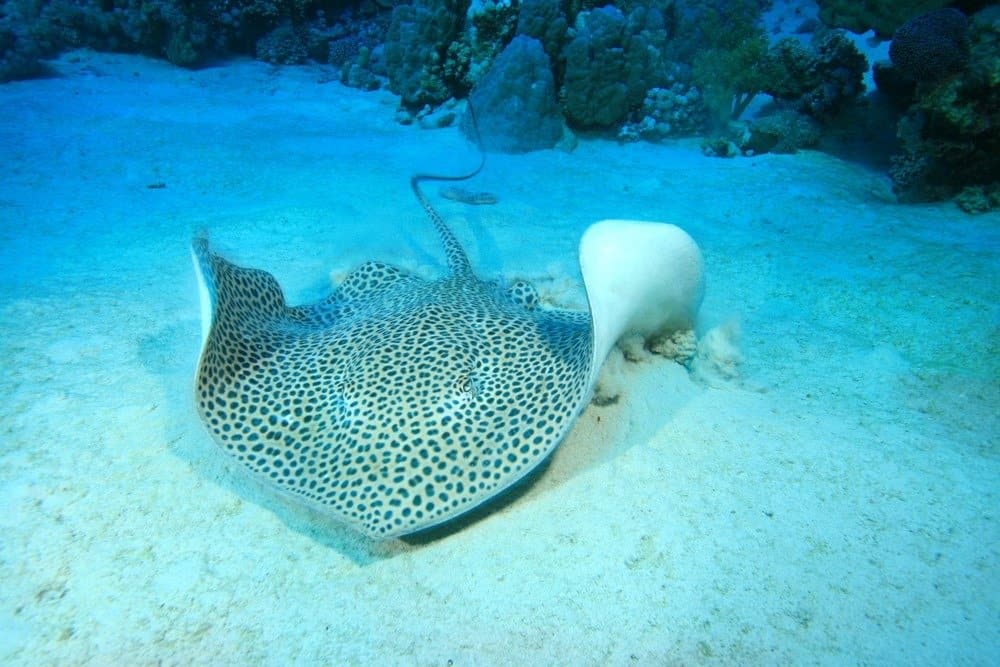
While the females can live for up to 25 years, the males have a shorter lifespan that could reach up to five to seven years.
©Rich Carey/Shutterstock.com
In most species, the males are always larger than the females. However, for stingrays, the reverse is the case. This superiority doesn’t just end at size; it also shows up in their lifespan and growth rate. The female stingrays are larger than their male counterparts and mature faster than the males. The fascinating aspect of the comparison is their lifespan. While the females can live for up to 25 years, the males have a shorter lifespan that could reach up to five to seven years.
10. Stingrays Have Been Around Since The Time Of The Dinosaurs

is an extinct genus of primitive stingray from the Eocene and is closely related to the living family Urolophidae.
©Smokeybjb, CC BY-SA 3.0 – License
Some animals in the world today existed during the time of the dinosaurs. Animals like crocodiles, snakes, lizards, sharks, bees, and turtles are examples of animals who were privileged to survive the meteor shower that took out the dinosaurs. Amazingly, the stingray is one such animal that shared that period with the now-extinct dinosaurs, making the fish an esteemed member of the Jurassic Survivors’ Hall of Fame.
The photo featured at the top of this post is © iStock.com/slpu9945
Thank you for reading! Have some feedback for us? Contact the AZ Animals editorial team.



